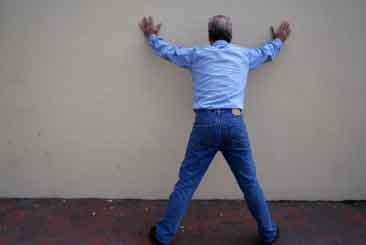|
|
| System of a shakedown: Beyond the solo contraband search |
| By Joe Bouchard |
| Published: 06/27/2011 |
 The achievement of the individual contraband hound cannot be overstated. Year after year, curious and tenacious individuals sniff out many dangerous enterprises and find a veritable arsenal of prison made weapons. Countless times, the solo searcher uncover plots and schemes that would otherwise leave the facility a much more dangerous place.
The achievement of the individual contraband hound cannot be overstated. Year after year, curious and tenacious individuals sniff out many dangerous enterprises and find a veritable arsenal of prison made weapons. Countless times, the solo searcher uncover plots and schemes that would otherwise leave the facility a much more dangerous place.
Solo search serendipity has helped to unearth many forbidden and perilous goods. Still, should we consider the notion of efficiency numbers? Are there ways that we can reorder our resources to find more contraband and quicker manner? Let's look beyond the solo contraband search. To do this let’s look at some systematic searches designed for more than one person: Simple coordination – Given the example of a prison law library, one can conclude that it is difficult to find anything in the numerous stacks. However, our odds for finding bootleg are increased by assigning staff to different areas. It may seem like an obvious thing to do, but is not always executed in that way. Several available staff in the room can be divided in such a way that each single search unit does not overlap. For example, “I will search the stack on the north walls. Isaacson, you look on the east wall while Freeman searches on the West. Whoever is done with their wall first may go to the South.” Diagramming – A simple diagram of a complex area can be made. It does not have to look like a Computer Assisted Drafting project. It need only be understandable to all who use it. Through color coding checks or words, when each part of the room searched, the corresponding part of the diagram can be marked off. This eliminates unnecessary repetition searches. Charting – Similarly, one can construct a search aid in a table format. The columns can be labeled “area searched”, “date searched”, “staff performing search”, and “items found”. It is simply a matter of filling in the table as the searches are conducted. As with the diagramming method, recording each area searched eliminates overlap in a multi-person team shakedown. With diagramming and charting, the paper search tool need only be created once. They can be photocopied as many times as needed. In addition a longitudinal study can be conducted by comparing locations and items found on certain dates. Patterns may be ascertained in this way. This is a sort of crime mapping. Time staggered searches – Perhaps an area is simply too large to search at one time. The sheer size of an area may be daunting. But, just as the way to eat an entire elephant is one bite at a time, the way to search a large area is one place at a time. Optimally, this will involve many staff. Realistically, seeking contraband in an area that is very large will have to happen over a long duration of time. Between prisoner movement, visit, callouts, and meals, is difficult to carve out a large chunk of time to search. This is cured by simply recording what area was searched and on which date. It does not guarantee that contraband will not be later placed by a prisoner in areas already searched. But each area will get a turn. As described above, a chart or diagram can be employed for this method. Training credits – Almost all agencies require that staff have annual training. Of course training varies from the theoretical such as criminal theory to the practical such as CPR and first aid. What can be more hands-on and practical than a bona fide search contraband? During a lockdown, an hour or two training credit can be granted for each person who helped in the search. All good training has objectives. Though it's not necessary, searching a special area for and intended bit of contraband would count as an objective. The institutional training officer can both plant contraband in a specific location or let staff search the area and discover any offender-planted bootleg. There is always room for the individual to demonstrate talent, even in a coordinated system search. Remember, thought, that there is strength in numbers. Even so, the ultimate goal in corrections is safety for staff the public and offenders. Coordinated searches help us inch closer to that often elusive aim of mitigating peril in our facilities. Visit the Joe Bouchard page Other articles by Bouchard: |
MARKETPLACE search vendors | advanced search

IN CASE YOU MISSED IT
|


Comments:
No comments have been posted for this article.
Login to let us know what you think